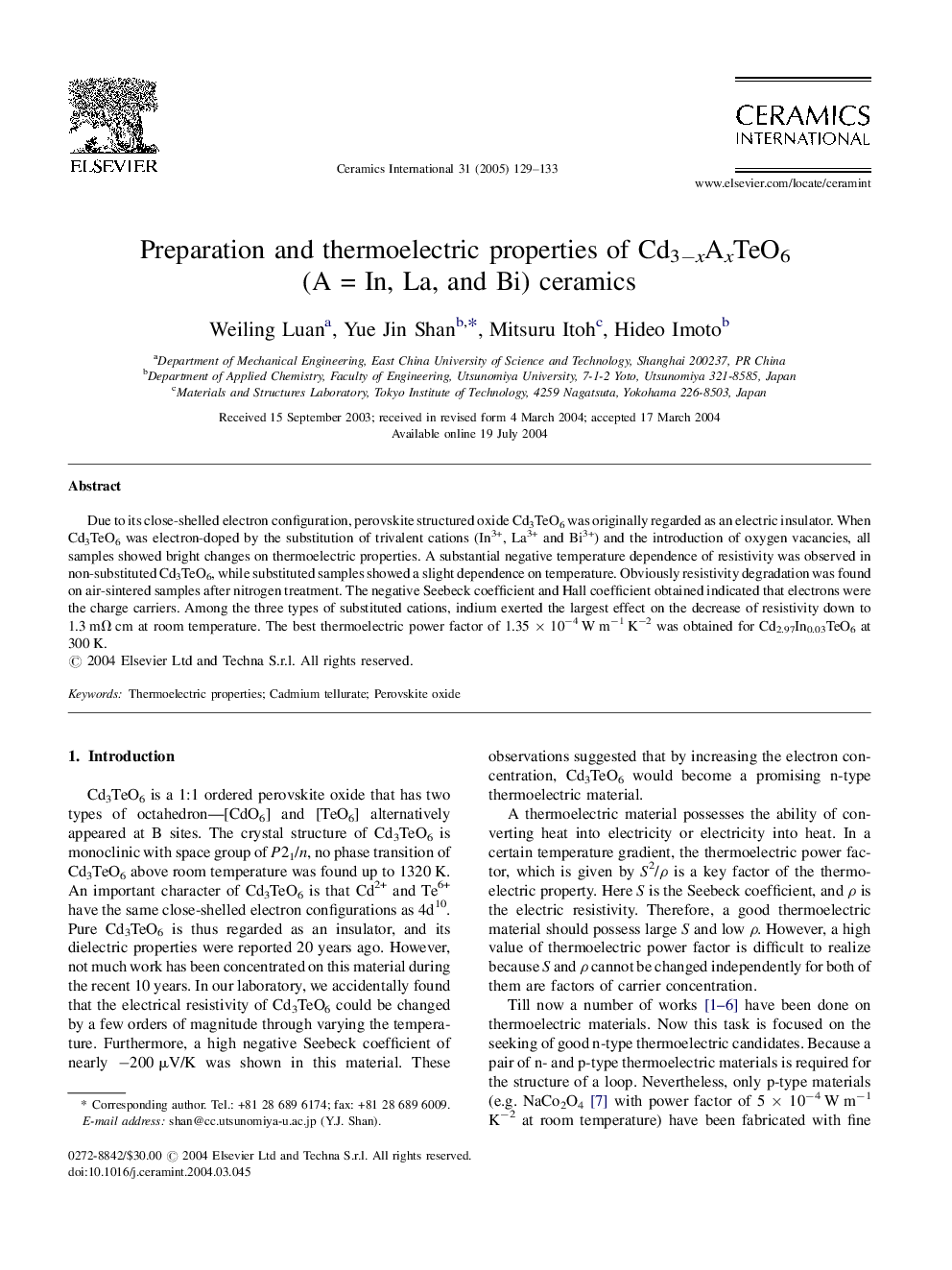| Article ID | Journal | Published Year | Pages | File Type |
|---|---|---|---|---|
| 10626614 | Ceramics International | 2005 | 5 Pages |
Abstract
Due to its close-shelled electron configuration, perovskite structured oxide Cd3TeO6 was originally regarded as an electric insulator. When Cd3TeO6 was electron-doped by the substitution of trivalent cations (In3+, La3+ and Bi3+) and the introduction of oxygen vacancies, all samples showed bright changes on thermoelectric properties. A substantial negative temperature dependence of resistivity was observed in non-substituted Cd3TeO6, while substituted samples showed a slight dependence on temperature. Obviously resistivity degradation was found on air-sintered samples after nitrogen treatment. The negative Seebeck coefficient and Hall coefficient obtained indicated that electrons were the charge carriers. Among the three types of substituted cations, indium exerted the largest effect on the decrease of resistivity down to 1.3 mΩ cm at room temperature. The best thermoelectric power factor of 1.35 à 10â4 W mâ1 Kâ2 was obtained for Cd2.97In0.03TeO6 at 300 K.
Related Topics
Physical Sciences and Engineering
Materials Science
Ceramics and Composites
Authors
Weiling Luan, Yue Jin Shan, Mitsuru Itoh, Hideo Imoto,
